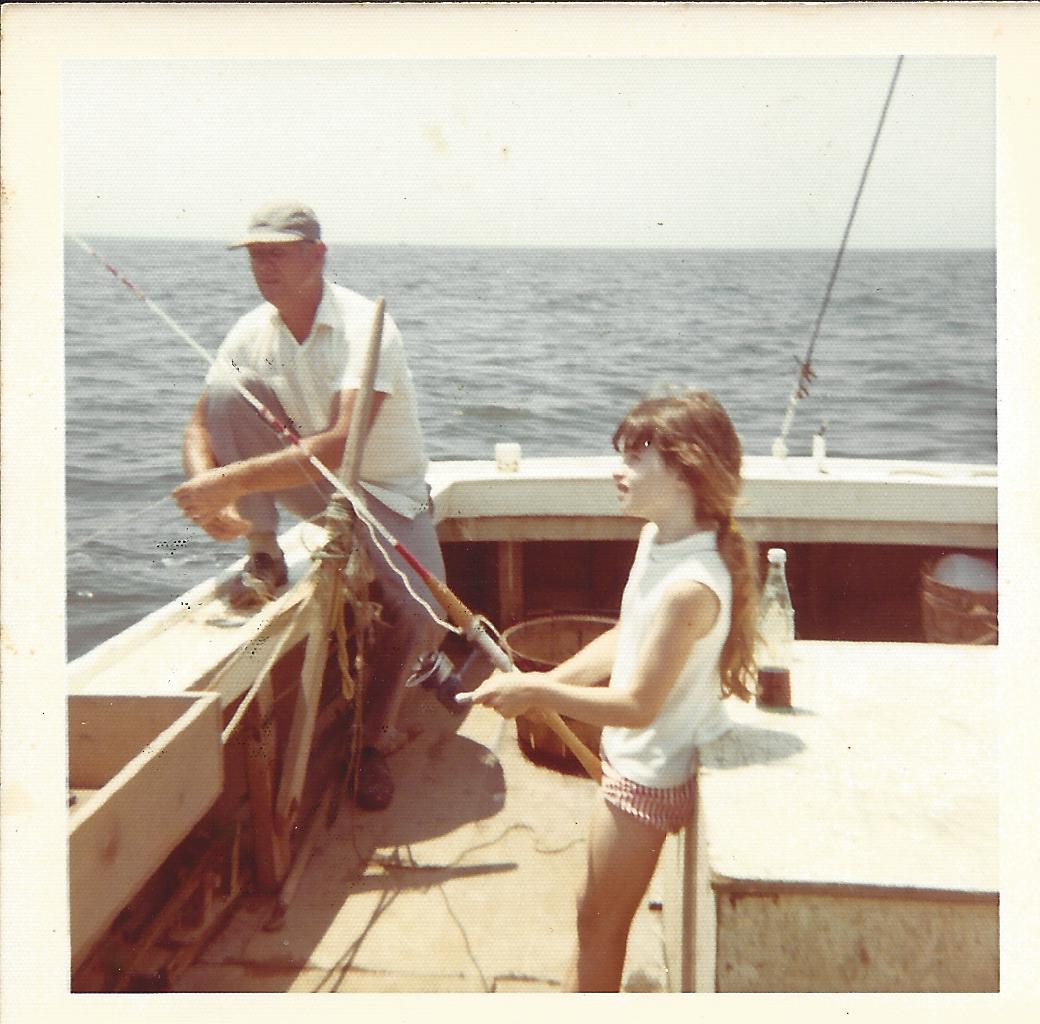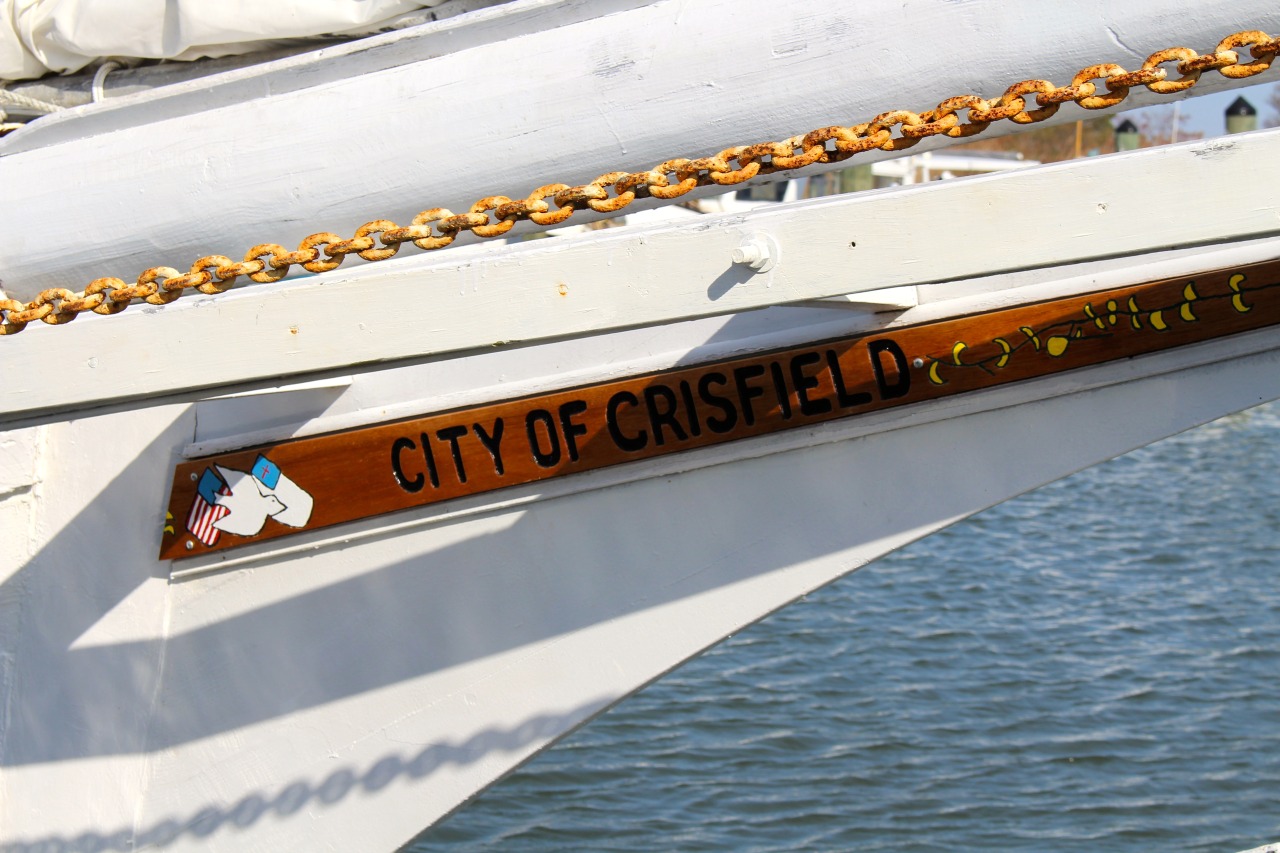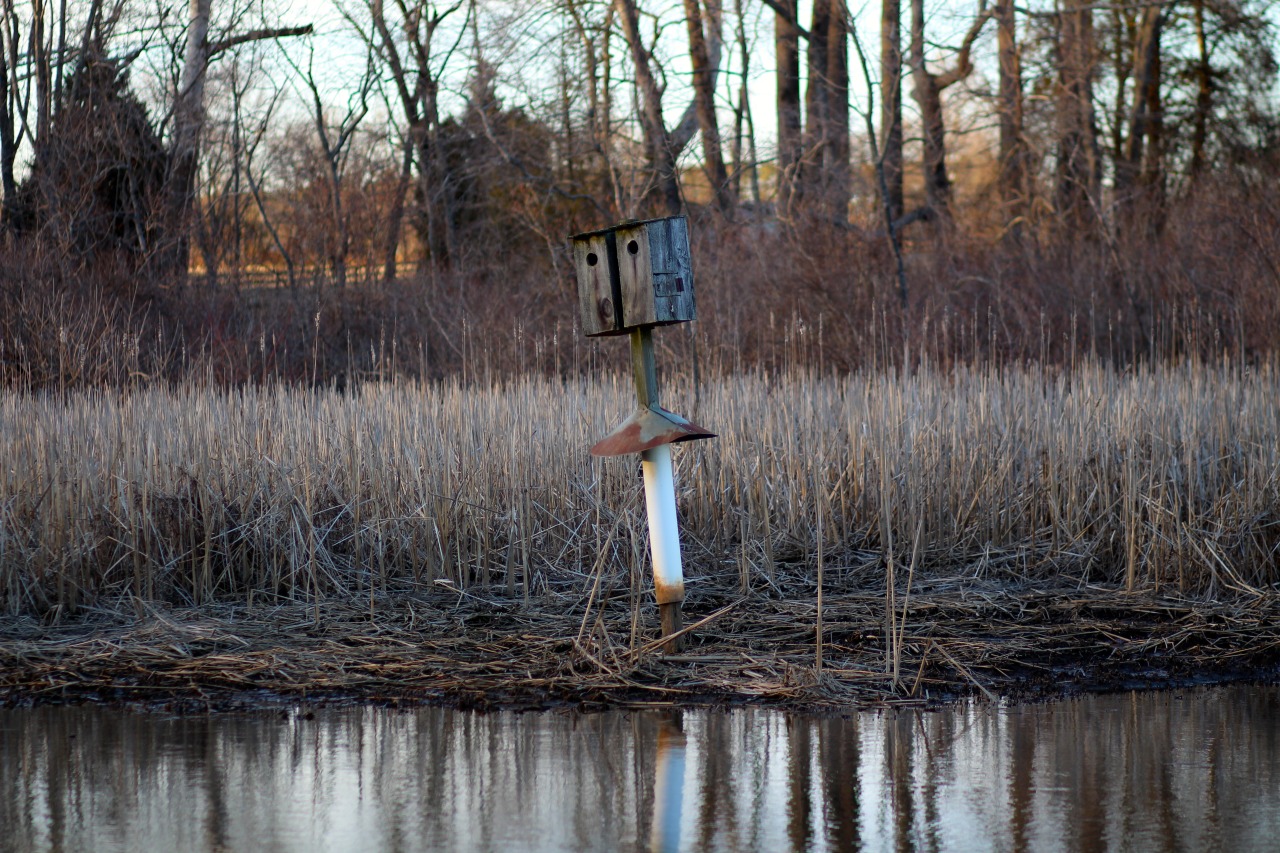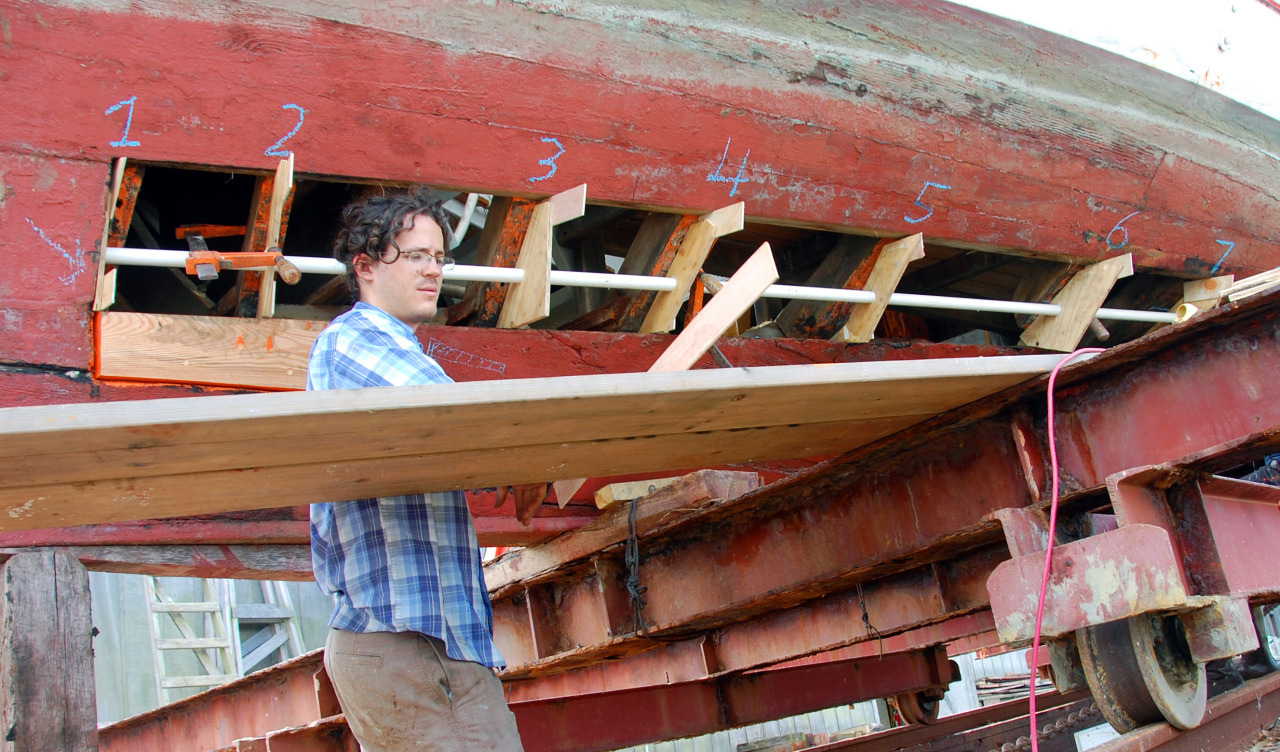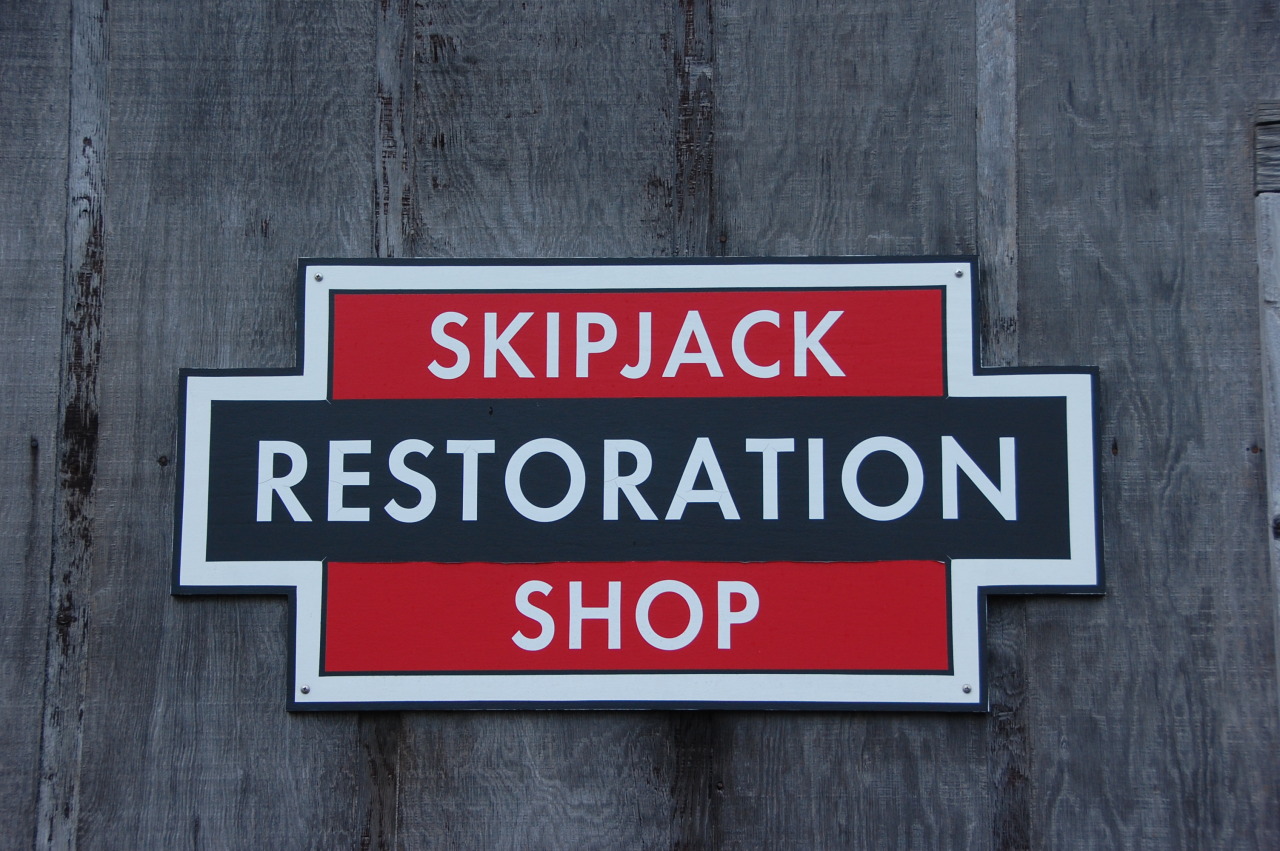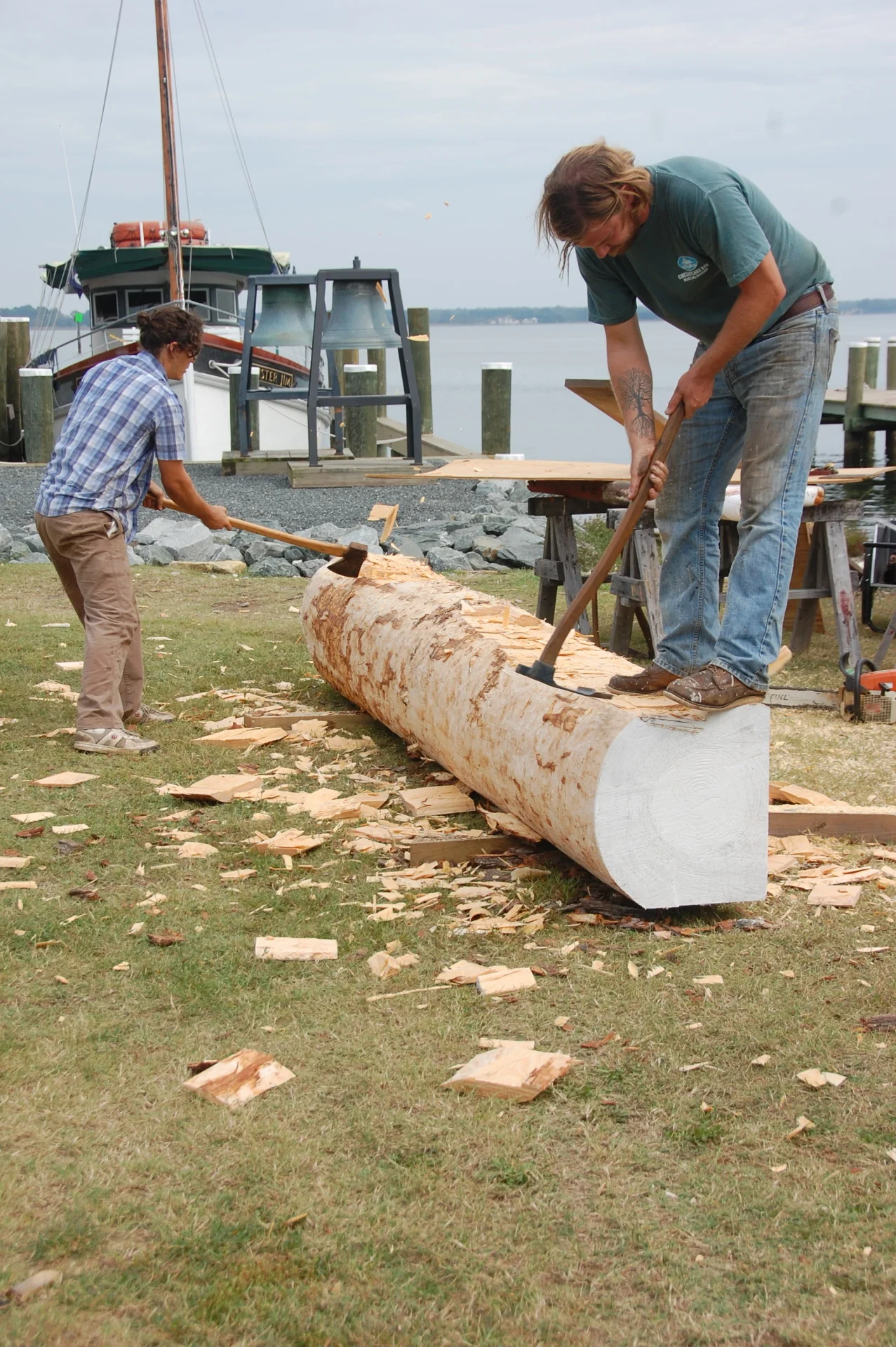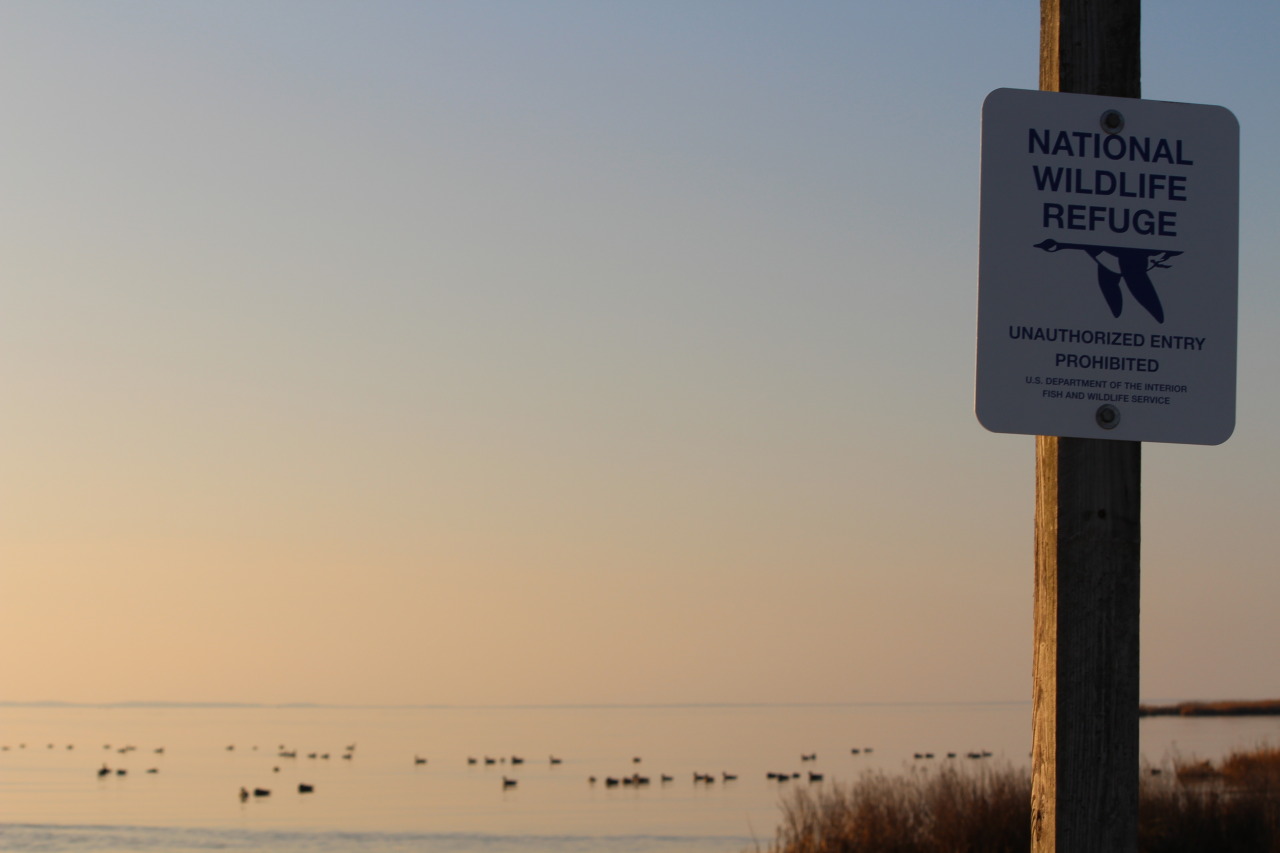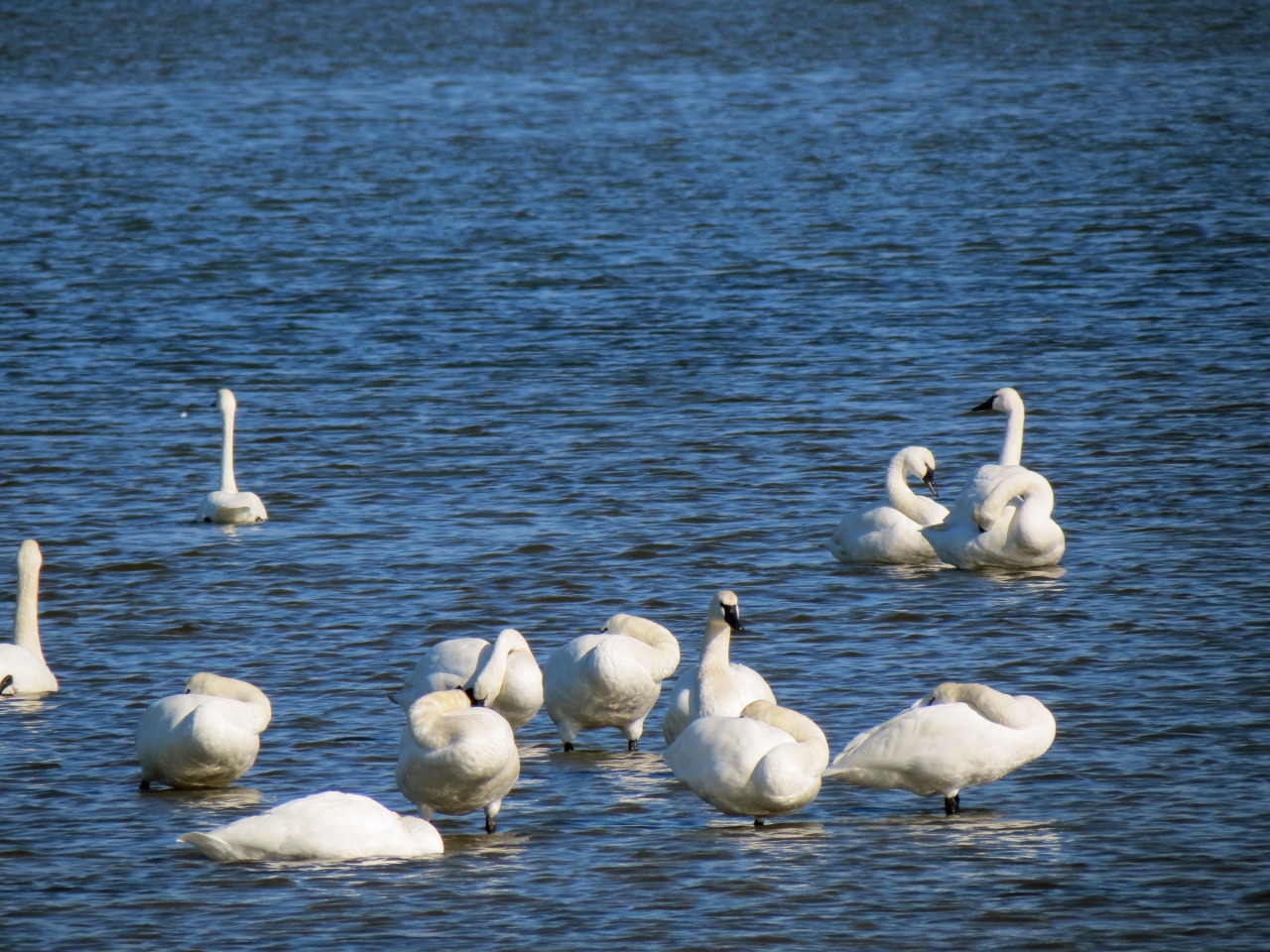Purple spikes of pickerelweed arc in the verdant marshes along a mid-summer Chesapeake creek.
On the hottest summer days, Chesapeake marshes come alive with the sound of a million droning insects and the chittering of small birds foraging on the wild rice. For all the commotion, it is remarkably serene. Fish jump, startled frogs chirp and splash, and if you’re really lucky, a river otter curiously harumphs at you before it glides away.
There are many beautiful places in the world, but none are beautiful in this same way— a symphony of water and wind, fiercely alive.
This 1972 photo of Sherri Marsh Johns and her dad, Calvin “Junie” Marsh, was submitted for CBMM’s upcoming exhibit, “Snapshots to Selfies: 50 years of Chesapeake Summers.” This exhibit, a collection of community-submitted summer stories and photos, will feature the memories of Bay folks from the last 50 years, doing what we have always done during the Chesapeake’s laziest days- enjoying the water.
Sherri writes,
“This was my first fishing trip after Dad bough my first fishing rod. We
are aboard his 42 ft. Bay-built box stern, the Sherri Michelle.
Although he was a waterman he didn’t own a fishing rod –if you look
closely you will see he is using a hand line. I can still see those
tough hands able to pull up a fishing line without using a reel.
Buying a fishing rod for me when he didn’t have one himself was such a
gesture of love from a man who was not good at communicating emotions.
Here I too young to appreciate any of that and am staring with at the
rod with complete impatience waiting for a bite.
When I look at this photo and imagine what it would look like if it were
taken now. The boat would be fiber glass, the glass coke bottle would
be a cardboard juice box, I would under the protection of sunscreen,
glasses and a hat and required to wear a PFD. Many things change,
fortunately not the tradition of fathers teaching their daughters to
fish.”
To submit your own photos and stories, go to http://bit.ly/1c2t2bT and share your summer snaps from the last 50 years!
Oyster Planting Day
Oyster restoration is an important part of the overall strategy to maintain a sustainable wild fishery in the Chesapeake Bay. In particular, oyster sanctuaries have become an essential part of the effort to encourage wild oysters to reproduce and to provide critical reef habitat to many aquatic species that call oyster bars home.

Oyster sanctuaries, although managed by the state, are replenished each year by oysters grown through grassroots efforts. Through initiatives like Marylanders Grow Oysters, ordinary people with docks on waterways throughout the state can help foster ‘nurseries’— cages of oyster spat that they’ll maintain for months until the oysters reach mature size.

When they arrive in their new wire mesh nurseries, these spat are miniscule, almost difficult to discern with the naked eye. Over three seasons, they grow to fingernail length, clustered on their host shell.

In the late spring, another group of volunteers goes out to gather up all these homegrown shellfish. The Chester River Association volunteers took a big pontoon boat out this year, to accommodate the hundreds of oysters they planned on collecting. It was a hot, sunny June day, and the river was still remarkably fresh from heavy spring rains. Despite the bluebird skies, gathering up the oysters in these nurseries is no mean feat. Cages that weighed 20 pounds in the fall might weigh 35 pounds in the spring, bulging with oysters furred with accumulated algae.


Oysters are unceremoniously dumped from nursery to a growing pile on the boat, some muddy, some brown with a winter’s worth of algae. Mud crabs and naked gobies escape back into the water, ousted from their temporary oyster digs.

Other creatures are sometimes found in the cages too, having wandered in when they were smaller and having grown bigger inside the nursery’s confines. One of the cages has a sizeable blue crab that was contentedly sloughing its shell and growing bigger, well-fed on the small organisms that had also populated the mini oyster reef.


Then it’s down to the lower Chester River, where the Chester Riverkeeper, Isabel Hardesty, and the Chesapeake Bay Maritime Museum Director of Education, Kate Livie, got to work shoveling spat onto a sanctuary designated by the Department of Natural Resources. Marked by orange buoys but otherwise unremarkable, the river’s unseen bottom is nevertheless the host to a healthy new population of oysters. There they’ll filter as they feed, clarifying the water, hiding legions of mud crabs, and helping to make the Bay that much better, one oyster at a time.
Want to get involved? Lots of Bay organizations can hook you up with your own oyster nursery- for free!
Marylanders Grow Oysters: http://oysters.maryland.gov/
Chesapeake Bay Foundation: http://bit.ly/1BP9Iow
For a more comprehensive list, including Virginia programs: http://bit.ly/1eMR4ta
Summertime, and the living is easy— especially if its the Land of Pleasant Living. Crabs are Chesapeake tradition, and this 1905 photo of crab pickers shows that’s nothing new. Crab sizes, however, definitely have— just one of the monster jimmies in this picture would fill out a pretty hefty crabcake!
“Picking Crabs for Market on the Banks of the Chesapeake Bay, 1905.” Stereograph image from the Library of Congress Collections.
An evening thunderstorm passes at Dorchester County’s stunning Blackwater National Wildlife Refuge, where marsh, water and sky bleed together beautifully.
The Chesapeake was a vital link between distant communities
along its shorelines. An extensive network of
steamboat routes bound for Baltimore interlaced the winding tributaries of the Bay.
For a minimal fee, a passenger could board in Baltimore at 5 pm on
a Monday, ride down the Bay, up the Potomac River, and stop at up to two dozen
landings before arriving in Alexandria on Wednesday morning, all the while enjoying fine meals and cozy overnight accommodations.
Tickets cost as little as $.50. Though affordable, a trip on a steamboat to Baltimore was an infrequent treat for most people in small Chesapeake towns. Embarking on a special day-long steamboat excursion was cause for excitement, as described in a scene in “The Lord’s Oysters,” by Gilbert Byron, set in Chestertown, Maryland:
“Next week,” Mama said, “we’re going to Baltimore on the B.S. Ford. I’ve got to do my Christmas shopping.” I couldn’t hardly wait, the days passed so slowly. The night before, I didn’t sleep a wink; then early morning on the river, a quick breakfast, and we were off to the steamboat wharf.’
Steamboat tickets and route map, D.P. Barnett (dates unknown), “Map of the Baltimore, Chesapeake and Atlantic Railway Company and Maryland, Delaware and Virginia Railway Company,” 1911. Digital image by David W. Harp © Chesapeake Bay Maritime Museum.
Some recent high school students working with CBMM on a year-long oyster program started a twitter account, “Crassostrea Virginica” at https://twitter.com/OysterLover123 as their final project. It’s hilarious and full of great information on oysters, too. Great work, guys!
Sunset on the Chesapeake’s Miles River, as seen over the bowsprit of the skipjack HM Krentz. “The Krentz,” as she is commonly referred to, is a working skipjack based out of St Michaels, Maryland. Constructed in 1955 in Harryhogan, Virginia, the HM Krentz was built during one of the Chesapeake’s ‘mini oyster boom’ years, which happened twice in the 20th century after World War I and World War II. Watermen, returning home, found the oyster populations had rebounded after several fallow years while the oystermen were overseas.
photos by author
City of Crisfield at the dock in Wenona harbor, Maryland. She was built in 1948 in Reedville, Virginia, and is one of the few working skipjacks still left on the Chesapeake- most of the other vessels now earn their keep as education or pleasure craft.
Every winter, she heads out to the Tangier sound to oyster with her owner, Captain “Daddy Art” Daniels, notably the oldest skipjack captain still living. Skipjacks were practical vessels, built quickly and cheaply, but still sturdy and beamy enough to carry hundreds of bushels of oysters on a good day’s harvest.
An endangered species, skipjacks are an iconic Chesapeake symbol of the 19th and early 20th century, when the working communities of the Chesapeake built homes and futures on oyster money.
An incredible panorama of Baltimore harbor, circa 1914, with steamboats docking by oyster packing houses and the inner harbor still in use as a working waterfront. Click on image to see larger version.
Image, Library of Congress collections.
Miss Freedom Cuts a Figure

One of the most-recognizable objects in the collections here at the Chesapeake Bay Maritime Museum is not a skipjack or a lighthouse- it’s an amply endowed, brightly painted figurehead. “Miss Freedom,” as she is known familiarly here at CBMM, is undoubtedly one of the highlights of any visit to our campus. But behind her carmine pout and myopic gaze is a history of generous proportions.
Where did such a big figurehead come from? Although her scale would indicate she was intended for an enormous ship, “Miss Freedom” was always, in fact, a bit top-heavy. She was made for a relatively small vessel—the 88-foot schooner yacht Freedom. But when yacht designer John G. Alden built Freedom in 1931, he never intended for her to have a figurehead at all.

“Miss Freedom” adorning the prow of the schooner Freedom, ca, 1955.
Just before World War II, the schooner was given to the U.S. Naval Academy to train midshipmen in sailing. One of Freedom’s captains requested a figurehead, and the Academy’s patternmaker, John M. Cook, made a sizeable one. Boasting a starry headress with gilded eagle’s wings, the figurehead was eye-catching. It was also quite obviously out of proportion to the modest schooner, dominating most of the vessel’s prow.
After a few years, “Miss Freedom” had to be removed. Her statuesque bulk added 450 pounds to the bow and was vulnerable to damage. Retired from her life on the water, she was then installed at the Naval Academy Museum for the next chapter in her life.
“Miss Freedom” and her obvious charms proved to be quite a popular addition to the Naval Academy. Carver John M. Cook later recalled, “Midshipmen entered the Museum where the Freedom figurehead was and rubbed their hands on the large bosoms for luck.” He continued, “One Midshipman wrote his mother and told her what he did and the luck he had. Apparently his mother didn’t agree. She wrote the Admiral a letter, and the Admiral’s orders were, ‘Move it.’”

A young visitor to the Chesapeake Bay Maritime Museum poses with “Miss Freedom” in the 90′s. Image courtesy of Allison Speight.
Needing a new home for the buxom blonde, the Naval Academy Museum arranged to loan “Miss Freedom” to the Chesapeake Bay Maritime Museum. She’s spent the last 30 years as the unofficial ‘hostess with the mostest,’ featuring in countless family photos with her iconic physique and winning patriotic flair. This year, she’ll be installed in a place of honor in our Broad Reach: 50 Years of Chesapeake Collecting exhibition, as one of the 50 top highlights of our collection. Surrounded by priceless artifacts and fascinating images, she holds her own- "Miss Freedom,” a woman with a Naval past and a ruby-lipped Chesapeake future.

Spring Spawn

Alewife Herring Spawn on the Potomac River, photo by Jay Fleming.
Every year, as they have for thousands of years, fish flood into the Chesapeake. Flowing upstream, against currents that may still contain sheets of drift ice, they return to the streams of their birth. Today, we may look for the iconic osprey’s migration back to the Chesapeake as the first sign of spring. For our Bay ancestors, however, renewal and rebirth was all signified by molten silver rivers of spawning fish- shad, perch, herring, rockfish.

Hickory Shad spawn in Deer Creek off the Susquehanna, photo by Jay Fleming
Most of species are known as anadromous fish- species that normally live in the ocean, but return to to freshwater tributaries to spawn. Often, these tributaries were where they were born, small rivulets of water in brown winter marshes. A few, like perch, are semi-anadromous, living most of their lives in the Chesapeake’s brackish main stem and returning to their natal freshwater birthplace to furiously reproduce.

Yellow Perch Eggs, photo by Jay Fleming
Millions of fish rush upstream to answer the roaring impulse to reproduce. Once they get there, the act itself is surprisingly demure. In the case of shad, for example, female roe shad wait until dusk to release their eggs. These, tender, translucent, and impossibly fragile, drift along the bottom, where the male buck shad swim overhead, lacing them with milt. No mating rituals, no togetherness, no nuturing for shad- in dark water, they achieve the single purpose of their life and depart, bound for the sea. Their progeny, fertilized, plump up and become semi-buoyant. In this vulnerable state, for 5-9 days, they are the basis of the food chain until they move up one rung by breaking from the eggs on the last day as tiny fish, journeying for the ocean.

Yellow Perch spawn on the Magothy, eggs in background, photo by Jay Fleming.
For generations, we have harnessed the bounty of this seething torrent. Chesapeake Native Americans created fish traps, or weirs, from rocks on freshwater rivers to funnel the fish into pools. Colonial fishermen set huge seine nets, encircling the fish in mesh corrals on the flood tide. They hauled the nets, frothing with fish, to the shore, where their springtime catch would be cleaned, salted, packed, and stored away for breakfasts throughout the year.

American Shad Eggs from the Potomac River, photo by Jay Fleming.
The arrival of the spring spawn couldn’t have been better timed. At the desperate tail end of winter, when overwintered stores were depleted to worrisome lows, the fish came. Geese had hardly left the quiet freshwater coves when the pulse of hickory shad and glut herring would rush in. So vital were these fish as salvation from late winter’s terrible teeth that Chesapeake dams were broken and millers killed to allow the fish upstream, food delivered by tide and fin. Shad roe was the original Easter egg.
Many species of anadromous fish have populations impacted by pollution and dams- an unintended side-effect of water power. Though restoration initiatives are seeing some positive changes, the spring spawn is diminished, dimmed. Once the herald of the season’s transition from bitter winter to balmy spring, the return of the fish to the Chesapeake has largely lost its meaning. Yet anadromous fish eggs, vibrating with tiny life, still bounce along the Bay’s bottoms every year.
Even as we hunt for their pastel-dyed counterparts this weekend, think for a moment of the shad, the herring- bearers of a tradition older than our existence, the first sign of spring.
Photos in this post have been generously shared by Chesapeake photographer Jay Fleming. Check out more of his work here: jayflemingphotography.com
Don’t miss this beautiful, haunting elegy for the last house on Holland Island in the Chesapeake Bay. The song and images depict a real working community that slowly washed away with the tide. To learn more about the history of the house and the island on beautiful Swimmers, click here: http://bit.ly/1C1Tp7q
George Hastings describes his favorite way to eat an oyster in this outtake from Chesapeake Bay Program’s latest video feature, “How to Shuck an Oyster.” Hastings is a two-time national champion and one-time world champion oyster shucker, and on a recent afternoon he shared his wisdom at Nick’s Oyster Bar inside Baltimore’s Cross Street Market. Check him out at www.chesapeakebay.net.
Some see the return of the osprey as the herald of spring in the Chesapeake. For others, it’s the arrival of another beautiful bird- the wood duck. Wood duck boxes like the one above have been constructed in wooded marsh habitat throughout the Bay’s tributaries. Simple but sturdy, they’ll be home to these gorgeous waterfowl for a few seasons while they mate, lay eggs, and rear their young.
Wood ducks are visually arresting. Their latin name, aix sponsa, translates to “waterfowl in a wedding dress”- a clear reference to their show-stopping feathers. That distinctive plumage, however, made them a target in the 1900′s when hunters sought them as gorgeous trophies and welcome additions to the cookpot. Harvested to the brink of extinction, wood ducks were saved by hunting regulations and a popular wood duck box initiative. Homeowners participated by creating new habitat for the gaudy birds using the program’s materials and placing them in wooded marshes throughout the Bay.
The initiative has been a success story, and the wood duck’s populations are now stable. Every year as spring arrives, so too do thousands of the quick, low-flying waterfowl. They take to the wooded swamps, the tannin-rich pools reflecting their dazzling display— a reward for another winter concluded, a reminder of renewal, and a sign of the enduring beauty of the Chesapeake Bay.
Scenes from our boatshop here at Chesapeake Bay Maritime Museum, where a whole company of skilled shipwrights use traditional techniques to keep our wooden Floating Fleet above the waterline.
From hewing whole logs for our log-built bugeye, buyboat and log canoes to repairing planks that were made from Eastern Shore pine 100 years ago, the boatshop is a hive of activity. It’s also where cedar shavings form small mountain ranges, full of tools a time-traveler from St Michael’s shipbuilding heyday would find familiar.
Sometimes, after the work is done, it’s also a place where you can find a some tunes being scratched out on a guitar and a banjo, dexterous carpenter’s hands coaxing tunes instead of oak. The boatshop is a special place, a Chesapeake place, and overall, a lively place, where traditions live and breathe, coexisting peacefully in our modern world.
This morning, many Chesapeake residents woke up to a rare and beautiful winter gift— hoarfrost. Essentially a frozen mist, thin ice particles coated everything from cattails to brambles, transforming a stark landscape into a glittery spectacle. Fox tracks laced through the coated marsh where glassine flakes gently blew away. After a long, punishing winter, the delicate, fleeting frost was almost like an apology. By 10 am, it was gone.
Workboats all lined up and ready for dredging at a marina in Chance, Maryland, way down at the marshy islands on Maryland’s Eastern Shore. It was a windy, rough day and the watermen didn’t go out, providing a dockside view of their winter gear and oyster mud.
Dredges are still a common tool for oystering in the Maryland part of the Chesapeake, even though they’re a gear type introduced in the 1840’s. Blacksmiths and gear netters make the frames and the rope “baskets,” just as their fathers and grandfathers did.
Oystering, the oldest Chesapeake fishery, still represents a seasonal portion of the waterman’s livelihood, with some of the strongest intact traditions, methods, and technology. Although simple and sturdy, these dredges represent an integral and dwindling part of the Bay’s iconic heritage.
Scenes from a Chesapeake island refuge in winter— short days mean long shadows, and an easily-lost distinction between water and land, past and present. Ringing high over the still water is the mournful calls of tundra swans, overwintering in the ice-sheeted coves. The ghostly tufts of cattail and phragmite catch the last light, will o’ wisps of summer’s green lushness.

